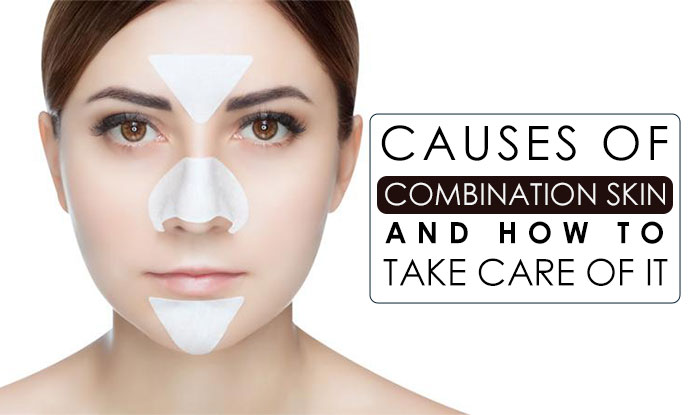You must have heard about the 4 primary skin types – dry, oily, normal, and combination. In this article, let’s take an in-depth look at the combination skin type and how one can care for it.
What Does Combination Skin Look Like?
Are some areas of your face dry or normal, whereas the others appear greasy by mid-day? That’s combination skin. Normally, you’re likely to have an oily T-zone and dry or normal cheeks.
The condition of your skin might fluctuate between seasons. Your skin might really feel dry during the winter months and greasy through the sultry summertime season. The sebaceous glands in your T-zone are extra active than the rest of your face, making it seem greasy and shiny.
Do this!
Take a sheet of blotting paper. Pat it gently in your cheeks. Does it pick up any oil at all? If not, your cheeks are dry. If it picks up some quantity of oil (however isn’t dripping with oil), your cheeks are normal.
After that, pat it gently in your T-zone (your forehead and nostril bridge). Check out the sheet. Does it acquire an excessive amount of oil? If yes, you probably have an oily T-zone. That is an easier way of figuring out your skin type.
The three basic signs are
- Oily T-zone
- Dry/normal cheeks
- Skin-type adjustments with the change in climate
Now, let’s go deeper and understand why you have got combination skin and how one can take care of it.
What Causes Combination Skin?
There are a number of things that may contribute to combination skin. Nonetheless, most of the time, it depends on the skin type you have inherited out of your mother and father and the type of products you utilize in your skin. Listed below are just a few possible causes:
Genetics:
If one or more of your family members have combination skin, you’re more likely to have it too. Genetics plays a serious role in determining your skin type.
Products:
The products you utilize could also be too harsh in your skin. In case you use products that break-down your skin barrier, it’s probably that you’ve misplaced the necessary oils and moisture required by your skin.
This could stimulate the sebaceous glands to supply an excessive amount of sebum, making your T zone oily. Products with strong chemical compounds and substances can even dry up your cheeks and the rest of your face. It is suggested for you to use products that fit your skin type.
What Is Dry-Combination Skin?
Dry combination skin is characterized by dry cheeks and an oily T-zone. Most of your sebaceous glands are positioned in your T-zone. This primarily means your T-zone produces extra sebum than the rest of your face.
When your skin is dry, the sebaceous glands might overproduce oil to keep it hydrated, which will end in a greasy, oily forehead and nose bridge. Nonetheless, your cheeks might stay dry.
What Is Normal-Combination Skin?
When the skin in your cheeks is neither dry nor oily however you have got an oily T-zone, it’s primarily known as normal-combination skin.
How Can You Take Care Of Combination Skin?
When you have combination skin, a product that will work in your T-zone might prove to be a troublemaker when utilized on the rest of your face. You might be basically treating two totally different skin types when you have got combination skin. So be cautious of what you apply to totally different areas of your face and follow these steps:
Follow The Proper Skincare Routine
Cleaning, toning, and moisturizing must be a part of your everyday skincare routine you probably have combination skin.
Use A Mild And Water-Soluble Cleanser
Use a mild cleanser that can assist preserve your skin’s pH levels. Our skin is weakly acidic. Most cleansers are alkaline-based that have an effect on the pH levels of your skin. Harsh cleansers harm your pores and skin barrier and take away essential oils. A mild, water-soluble cleanser must be superb in your skin-type.
Avoid Oil-Based Products
Oil-based products can clog your pores and trigger break-outs. When you have combination skin, keep away from using these products as your T-zone could also be acne-prone.
Use A Toner After Cleaning Your Face
Be sure that the toner you choose is alcohol-free. Alcohol-based toners can dry up your face, affecting its moisture content. This could stimulate your sebaceous glands to supply an excessive amount of sebum. A toner that nourishes your skin and makes you feel refreshed is an efficient option for combination skin.
Moisturizer your skin regularly
Use a lotion-based moisturizer in your T-zone and a heavy, cream-based one in your cheeks and different dry areas. Lotions can irritate dry skin and is probably not as efficient as a cream.
Use A Sun-Block Instead Of A Sunscreen
SPF is a must, regardless of your skin type. When you have combination skin, get yourself a broad-spectrum sun-block. It will stop clogged pores as well as lack of moisture from the dry parts of your face.
Use Blotting Paper
Gently pat blotting sheets on the greasy parts of your face. It will temporarily soak up the surplus sebum out of your skin. Be sure that not to rub the blotting sheets in your skin. You need to get rid of undesirable grease, not to take away all the important oils out of your pores and skin.
Exfoliate
Ideally use a BHA exfoliator a couple of times per week. BHAs cleanse your skin from the inside, reduce irritation, and enhance pores and skin texture. A generally used BHA is salicylic acid that’s thought-about to be amongst one of many most secure and most non-irritating substances in skincare products.
Combination skin generally is a problem to take care of. Nonetheless, following these tips may help you obtain healthy skin.


